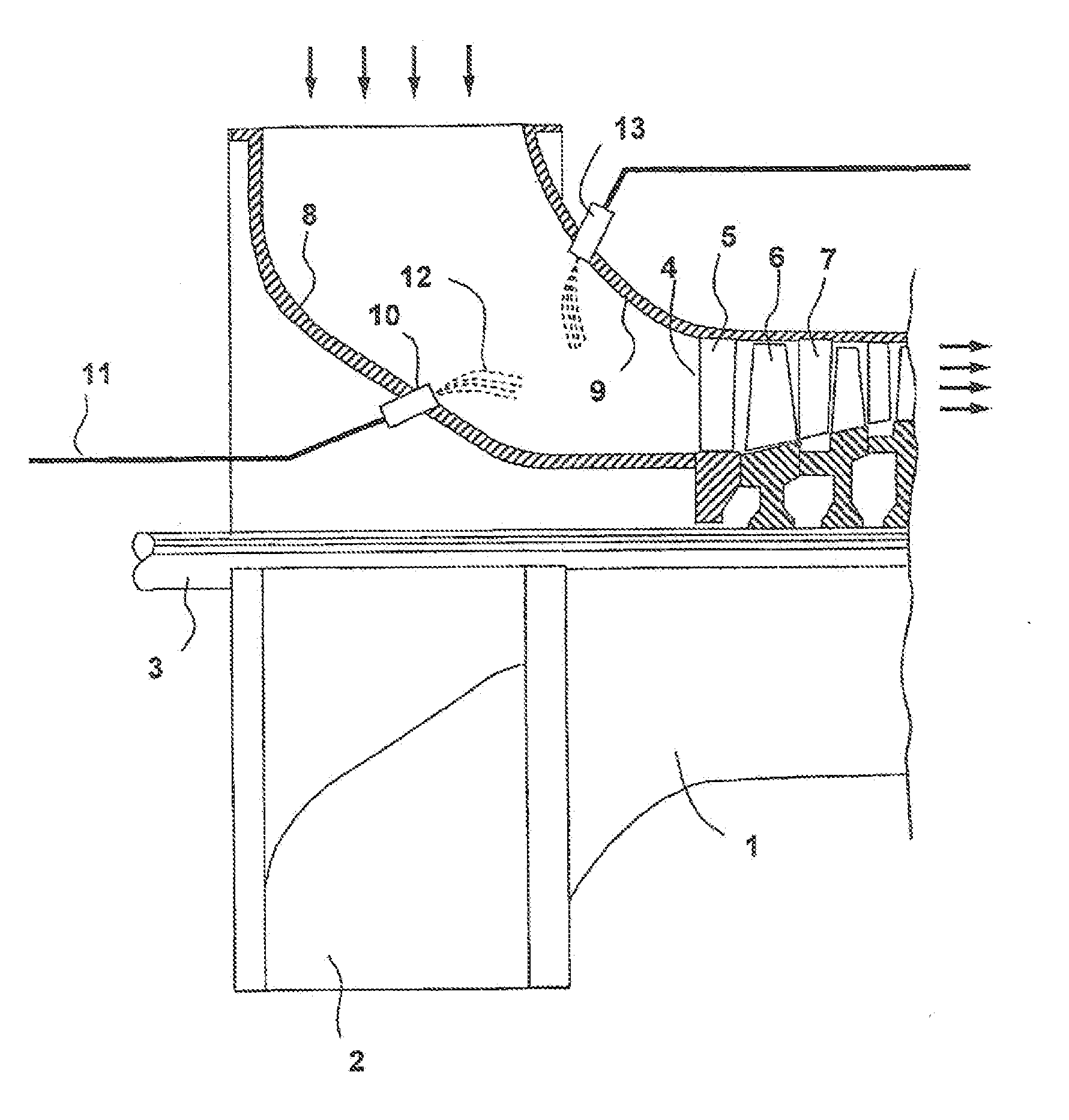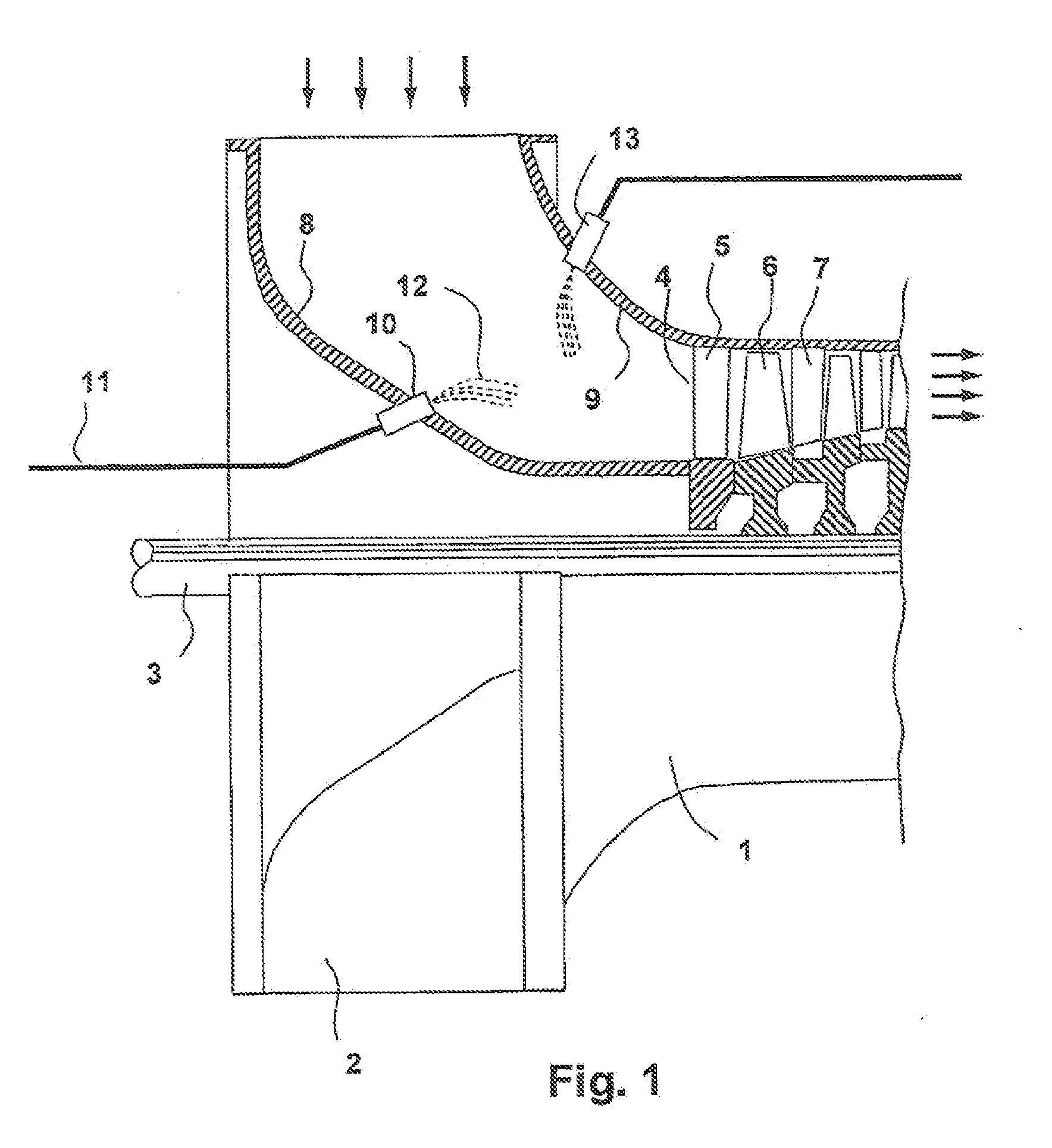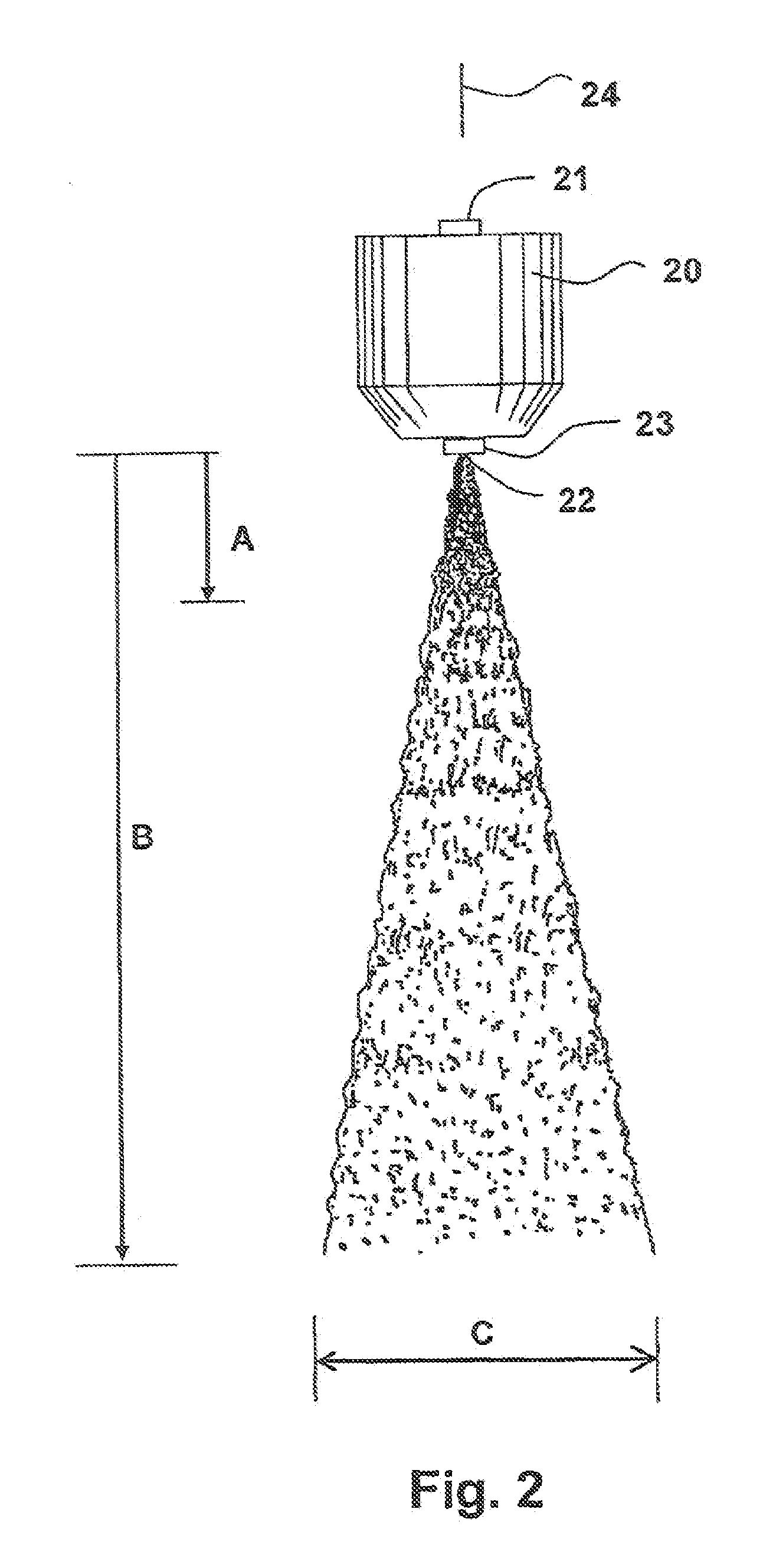Nozzle and method for washing gas turbine compressors
a gas turbine and compressor technology, applied in the direction of cleaning process and apparatus, lighting and heating apparatus, hollow article cleaning, etc., can solve the problems of gas turbine operation, large air consumption, reducing aerodynamic properties, etc., and achieve the effect of efficient and safe way
- Summary
- Abstract
- Description
- Claims
- Application Information
AI Technical Summary
Benefits of technology
Problems solved by technology
Method used
Image
Examples
Embodiment Construction
[0041]With reference to FIG. 1, a section of a gas turbine 1 and the positioning of nozzles for injecting of wash liquid into a compressor inlet are shown. The gas turbine comprises of an air intake 2 which is rotationally symmetric to axis 3. The air flow is indicated by arrows. Air enters radially to be rerouted and flow parallel to the machine shaft through compressor 14. Compressor 14 has an inlet 4 at the leading edge of the first disc of stator vanes. After disc 5 with stator vanes follows a disc 6 with rotor blades, followed by a disk 7 with stator vanes, and so on. The air intake has an inner duct wall 8 and an outer duct wall 9. A nozzle 10 is installed on the inner duct wall. A conduit 11 connects the nozzle with a pump (not shown) which supplies the nozzle with wash fluid. After passing nozzle 10 the liquid atomizes and forms a spray 12. The droplets are carried with the air stream to compressor inlet 4. Alternatively, nozzle 13 is installed on the outer air duct wall 9.
[...
PUM
 Login to View More
Login to View More Abstract
Description
Claims
Application Information
 Login to View More
Login to View More - R&D
- Intellectual Property
- Life Sciences
- Materials
- Tech Scout
- Unparalleled Data Quality
- Higher Quality Content
- 60% Fewer Hallucinations
Browse by: Latest US Patents, China's latest patents, Technical Efficacy Thesaurus, Application Domain, Technology Topic, Popular Technical Reports.
© 2025 PatSnap. All rights reserved.Legal|Privacy policy|Modern Slavery Act Transparency Statement|Sitemap|About US| Contact US: help@patsnap.com



